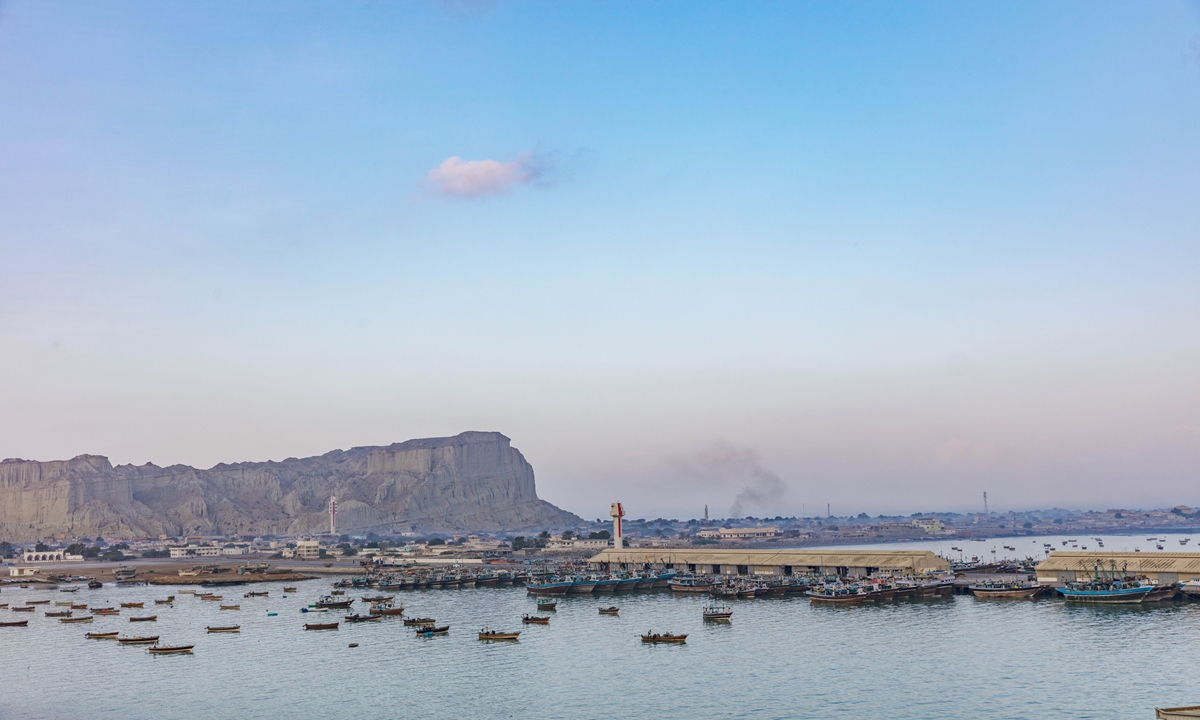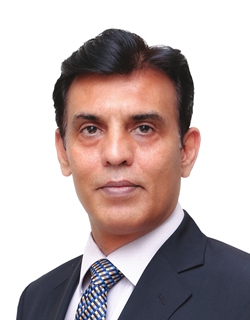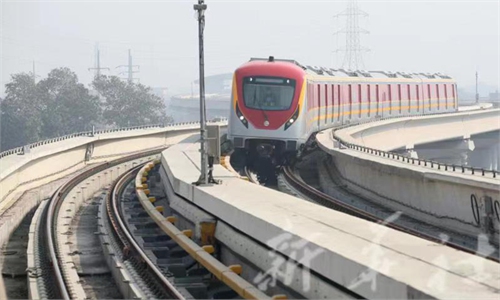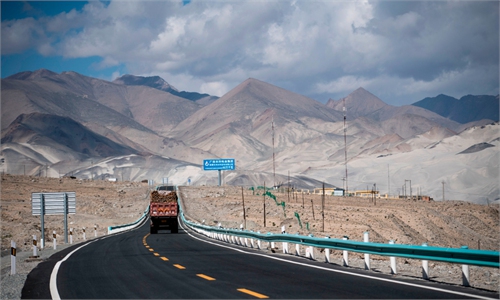BRI provides a new model of cooperation that helps address global challenges: Pakistani expert
New cooperation model helps address global challenges: Pakistani expert

View of Gwadar Port in Pakistan Photo: VCG
Editor's Note: The third Belt and Road Forum for International Cooperation, the most significant celebration marking the 10th anniversary of the Belt and Road Initiative (BRI), is being held in Beijing from Tuesday to Wednesday. Delegates from over 140 countries and 30-plus international organizations are gathering at this high-profile event in Beijing to discuss and review the accomplishments of BRI cooperation.Abid Suleri (Suleri), Executive Director of the Sustainable Development Policy Institute (SDPI) of Pakistan, also a founder member of BRI International Green Development Coalition (BRIGC), is attending the forum in Beijing, who noted in an interview with the Global Times (GT) reporter Wang Yi that the BRI offers a new cooperative model to fuel up economic development. The mutually beneficial cooperation between China and Pakistan under the BRI and the China-Pakistan Economic Corridor (CPEC) has provided Pakistan with important opportunity to deepen cooperation.

Abid Suleri Photo: Courtesy of SDPI
GT: This year marks the 10th anniversary of the BRI and the CPEC. How do you view the accomplishments of China-Pakistan economic and trade cooperation under the BRI and CPEC over the past decade?
Suleri: The CPEC is one of the flagship projects under the BRI. In order to completely understand the accomplishments of the CPEC, one needs to look back to recall what were Pakistan's developmental needs when CPEC started in 2013. At that time, Pakistan desperately needed electricity and it wanted infrastructure to improve connectivity within and across its borders. The phase one of CPEC remained successful, and Pakistan got all that it asked for, such as power generation plants, road infrastructure, and a deep-sea port at Gwadar.
GT: As China-Pakistan cooperation enters a new stage, how do you view the outlook for mutually beneficial cooperation? What is your view on the future cooperation between China and Pakistan?
Suleri: It can be said that the successful completion of CPEC stage one has provided Pakistan with the necessary prerequisites for the second stage of the CPEC. The future economic cooperation potential between China and Pakistan depends mainly on Pakistan's readiness to utilize the "hardware" that was built during the first stage of the CPEC.
Entering the next stage of the CPEC is a manifestation that both resolve to complement each other. The businesses and companies have learned how to create a win-win situation for both sides through better negotiations and agreeing to pragmatic terms and conditions. In a situation where Pakistan is investment-thirsty, and China is exploring venues to diversify its manufacturing supply chains as a safeguard against the West's "de-risking," cooperation between China and Pakistan can be mutually beneficial to both countries.
GT: BRI cooperation is characterized by openness and inclusiveness. Do you agree that the BRI provides a new cooperative model to activate global economic development?
Suleri: The BRI provides a new cooperative model to activate global economic development by creating a platform for dialogue, collaboration, and mutual benefit among more than 150 countries and international organizations. The BRI aims to enhance connectivity and integration across regions and sectors, such as infrastructure, trade, finance, policy, culture, and people.
By doing so, the BRI can help address the common challenges facing the world, such as poverty reduction, climate change, pandemic response, and digital transformation. The BRI follows the guiding principle of extensive consultation, joint contribution, and shared benefits, which ensures that all participants have an equal say and stake in the cooperation.
The BRI also respects the diversity and sovereignty of each country and seeks to promote win-win outcomes and common development. In a world of geoeconomics, the BRI is not a geopolitical or ideological agenda but a vision of openness and inclusiveness for global economic development.
GT: In the face of headwinds and uncertainty across the current global economic landscape, what role does the BRI play in promoting the South-South cooperation? What impetus does BRI cooperation provide for economic development of developing countries?
Suleri: UN Secretary-General Antonio Guterres said in February 2023, and I quote, "Today's poly-crises are compounding shocks on developing countries - in large part because of an unfair global financial system that is short-term, crisis-prone, and that further exacerbates inequalities. We need to massively scale up affordable long-term financing by aligning all financing flows to the SDGs and improving the terms of lending of multilateral development banks. The high cost of debt and increasing risks of debt distress demand decisive action to make at least $500 billion dollars available annually to developing countries and convert short-term lending into long-term debt at lower interest rates."
Assessing Chinese initiatives under the BRI for developing countries against the UN heads' above-quoted statement, one will find that China is filling the vacuum left by the global financial system. For comparison, according to a report by AidData, a US-based research lab, China provided $462 billion in official finance to 164 countries from 2008 to 2019, compared to $467 billion by the World Bank and $89 billion by the IMF.
GT: Since the launch of the BRI cooperation, new multilateral international financial institutions such as the Asian Infrastructure Investment Bank (AIIB) and the Silk Road Fund have been established. What benefits do these financial institutions bring to developing countries?
Suleri: Timely access to money, with almost no strings attached, is what is required by most of the developing countries, and the financial institutions like AIIB and Silk Road Fund are serving that purpose. They provide more funding and financing options for infrastructure projects in Asia, which are essential for economic development, connectivity, and integration.
The AIIB has a capital base of $100 billion, with over 90 percent of this contributed by Asian countries. They adopt a demand-driven and client-oriented approach, which respects the sovereignty and needs of developing countries.
GT: The BRI promotes the development of infrastructure, trade, and industries across partnering countries. However, some Western media outlets have never stopped hyping the "debt trap." How do you view the attacks?
Suleri: First thing first, let us assume that BRI initiatives are debt offered to member countries for their development needs. Debt is neither good nor bad.
The borrowing governments have to show maturity and responsibility to ensure that they enhance productivity and promote inclusive growth through the money they borrow for BRI initiatives. One cannot blame BRI for some of its members' lack of readiness and preparedness.
Second, the BRI and different financial institutions under it are filling in the gap created by the weakening global financial institutions. With the global financial institutions taking care of the developing world, the latter had no reason to explore alternative means of development cooperation.
GT: What is your opinion on the achievements of China's modernization and the potential of its economic development?
Suleri: China has achieved remarkable and inspiring economic and social transformation in the past four decades, becoming the world's second-largest economy, lifting hundreds of millions of people out of poverty, and contributing to global peace and cooperation.
China has pursued a vision of a resilient economy based on equity, sustainability, and innovation, which aims to ensure shared prosperity for all and promote social equality and justice.
China also has a clear strategy for its future development: to build itself into a great modern socialist country by the middle of this century. Advancements made by China in digital technology, artificial intelligence, climate-smart agriculture, electronic vehicles, and a transition toward a low-carbon society are some of the defining features that will shape the future economic development of China and beyond.



